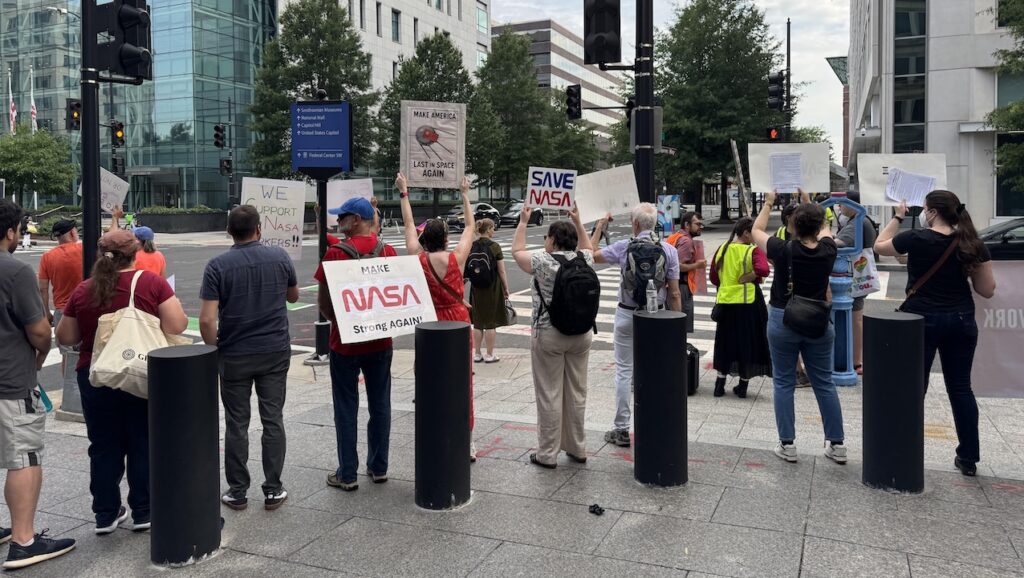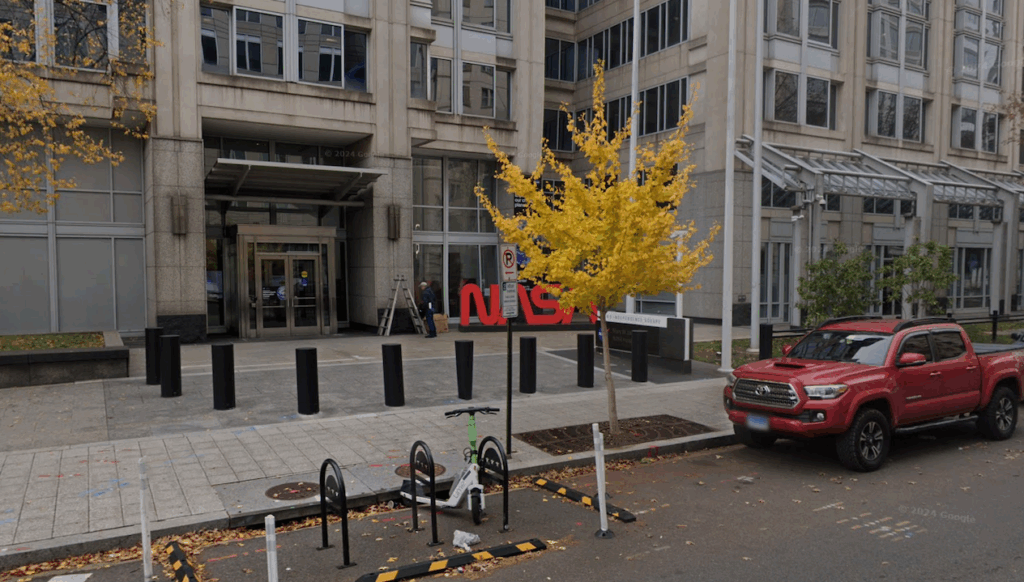Cost Increase For NASA Boulder Retrieval Mission That Congress Won't Fund

NASA Asteroid Redirect Mission Umbrella for Partnerships to be Released in September Seeking Hosted Payloads and Investigation Team, NASA
“The Asteroid Redirect Mission Umbrella for Partnerships(ARM-UP) Broad Agency Announcement (BAA) will solicit concept studies for basic and applied research and technology demonstrations, and mission investigations through partnerships with the ARM. The full BAA Solicitation, with two appendices, is expected to be issued in early September.”
NASA’s Asteroid Redirect Mission Completes Robotic Design Milestone, NASA
“Earlier this year, NASA updated the target launch date for the robotic mission to December 2021 in order to incorporate acquisition of the industry robotic spacecraft development into the project schedule. To reflect this new target date, the project’s cost cap was increased at KDP-B from $1.25 billion to $1.4 billion. This figure does not include the launch vehicle or the post-launch operations phase. The crewed segment, targeted for launch in 2026, remains in an early mission concept phase, or pre-formulation.”
NASA’s Boulder Retrieval Mission, earlier post (2015)
“And NASA can’t even admit that the $1.25 billion cost (without launcher) would balloon to $3 billion or so when it uses the two SLS flights it wants to use. And oh yes: the OSIRIS-REx mission will already do nearly all of the sciencey stuff ARM is doing (as an afterthought) – at a fraction of the cost of ARM.”
– House Appropriators Seek To Defund Asteroid Mission – Push NASA To The Moon & Mars, earlier post
– ARM Defenders Forecast Nasty Things If It Is Cancelled, earlier post
– Asteroid Boulder Retrieval Mission Needs a Precursor Mission, earlier post









So they’re actually planning to use an SLS flight for ARM? That seems like massive over-kill. At least in the case of the proposed Europa mission, SLS would bloat the cost but get the probe to Jupiter much quicker.
This is just like the space shuttle was before ISS assembly started. Lots of “make work” missions that really don’t make a lot of sense. In the case of the shuttle, launching commercial satellites never made sense. The flight rate would never have supported doing this long term. Also, many of the science flights (e.g. Spacelab) would have been better suited at a “long term” facility (i.e. space station) rather than running experiments on missions limited to a dozen days, give or take a few days.
Early in the Shuttle program, before it had flown, the cost of Shuttle operation was estimated to be lower than the cost of expendable launch vehicles, and what we now consider the “commercial market” for launch services was not yet viable, so that choice made sense. In retrospect the cost of Shuttle launch was clearly higher than that of the existing ELVs. The reason for the extremely large error in prediction of Shuttle operational cost has never been rigorously analyzed.
The reasons are actually quite clear. The design selected (a very large orbiter sporting high thrust, high efficiency main engines coupled with a large drop tank and two large segmented rocket boosters) simply could not be turned around in a timely manner. The fragility of the TPS, the initial issues with the SSMEs, the toxic hypergolic propellants (OMS, RCS, and APU), and and the high cost and long time needed to refurbishing the solids all prevented the low turn-around times needed to up the flight rate and therefore lower the per flight cost.
Those are some of the reasons for the high cost, and I am not arguing with your list.
But I was referring to the reasons that the original cost estimate was in error by well over a factor of ten, which would be totally unacceptable in private industry and drove the plans to rely totally on Shuttle. The cost predictions were off partly because there were no prototypes capable of orbital flight before the design was fixed.
In the case of Apollo the “official” estimate for program cost was $5B, again unrealistically low. James Webb essentially said “That’s not right” and estimated $20B off the cuff (in 1960’s dollars) which was essentially right on the mark. Unfortunately he was not around for Shuttle.
The problem with Shuttle was partly the failure to reduce risk by evolutionary development and partly intrinsic bias in cost prediction due to the fear that an accurate cost estimate would result in cancellation while a low-ball estimate would get the program approved and be forgotten.
As to flight rate, as many as eight Shuttle missions were launched in a year, in some cases less than three weeks apart. The cost per mission did not go down much with increases in the flight rate because of the cost of expendable parts and maintenance hours for each mission. The problem was not that the Shuttle could not fly more missions, but rather that flying more missions would cost more money, not less, and the total budget was limited.
“to the fear that an accurate cost estimate would result in cancellation”
Hasn’t bothered the SLS boys; they just shouted a big number in the first place.
But seriously: I’m curious about your comment, which appears to include a fair number of either suppositions or, perhaps, direct personal knowledge?
Actually a prime reason was the high number of people required to service and operate the system. Slow turnaround times was also a major factor.
I’d forgotten about that. Didn’t they try and push for all government satellite launches to be from the Shuttle payload bay at one point? I’m glad we avoided that particular disaster.
They were close. Oh, they were sooooooo close!
There were plans in the mid-80’s — at least with the military — that after the glut of satellites (esp. government ones) were launched via expendable LVs, that ALL ELV programs at the time would be cancelled and all tooling to make them would be broken up to ensure there’d be no going back!!
EVERYTHING was to be launched on exclusively on Shuttles – even DOD would have their own.
Then…. before that “glorious” plan was to begin that same year, Challenger happened. That forced-fed a perfect storm to Leadership as to the consequences of putting all their eggs-sats into one basket-launcher.
(yes we missed a lethal bullet by *that* much!)
Not only did NASA push for the shuttle to be the sole US govt. launch provider, that push was largely successful. That only changed after the Challenger disaster.
Actually, the plan would have moved all US payloads onto Shuttle, including commercial ones. The USAF originally signed on to this, but dropped out well before the Challenger accident because the Orbiter’s overweight condition meant it couldn’t launch fully fueled mega-sats like KENNEN and RHYOLITE. They started the CLEV/Titan 34D-7/Titan IVA program to “complement” the Shuttle years before they officially abandoned it. The reasons for the Shuttle system’s ~20% shortfall in lift is another thing that has never been rigorously analyzed.
SLS was to launch all US government payloads as well as commercial payloads in the US. Such launches were happening even as the backlog of payloads to fly on the shuttle kept mounting.
The Challenger disaster was “the final straw” resulting in a ban (written into law) preventing NASA from launching commercial payloads. The disaster also led to the USAF moving from shuttle launches to Titan IV and eventually the EELVs still being used today.
They were even building a launch pad and other facilities to launch military shuttle missions from Vandenberg AFB prior to the Challenger disaster.
I’m not seeing anywhere that says the SLS has to be the launch vehicle for the ARM spacecraft.
I was just going off of what Keith said. I certainly they’re not going to use SLS for it.
As far as I can tell it will need a HLV, but there are a few different options for that capability. The spacecraft hasn’t completed its design reviews yet, so I’d think launch vehicle selection won’t be for a year or so.